12 start with H start with H
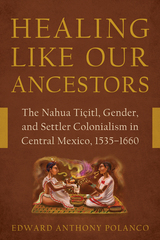
Early colonial Spanish settlers defined, assessed, and admonished Nahua titiçih (healing specialists) and tiçiyotl (healing knowledge) in the process of building a society in Mexico that mirrored Iberia. Nevertheless, Nahua survivance (intergenerational knowledge transfer) has allowed communities to heal like their ancestors through changes and adaptations. Edward Anthony Polanco draws from diverse colonial primary sources, largely in Spanish and Nahuatl (the Nahua ancestral language), to explore how Spanish settlers framed titiçih, their knowledge, and their practices within a Western complex. Polanco argues for the usage of Indigenous terms when discussing Indigenous concepts and arms the reader with the Nahuatl words to discuss central Mexican Nahua healing. In particular, this book emphasizes the importance of women as titiçih and highlights their work as creators and keepers of knowledge. These vital Nahua perspectives of healing—and how they differed from the settler narrative—will guide community members as well as scholars and students of the history of science, Latin America, and Indigenous studies.
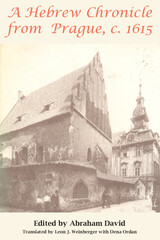
"This slender anonymous work, spanning 1389 to 1611, presents the priorities and concerns of a Jewish community straddling the late medieval and early modern periods. Ample footnotes and explanations provide the lay reader with sufficient background to understand the references to historical events and figures, to ideologies and to institutions. A comprehensive introduction presents the realities of Prague and Bohemia, as well as offering a helpful discussion of the chronicle and other contemporary Jewish accounts."
—Conservative Jewish Quarterly
"In about 1615 an anonymous Jew from Prague composed a short Hebrew chronicle to recount 'the expulsions, miracles, and other occurrences befalling [the Jews] in Prague and the other lands of our long exile.' Abraham David discovered the manuscript [and] added glosses, historical notes, and an introduction. . . . The chronicle, with its brief annual entries, is not a continuous narrative, but does give a feeling of immediacy, like a newspaper."
—Polin: Studies in Polish Jewry
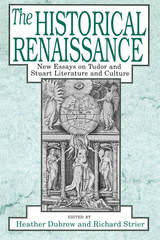
The volume includes studies of mid-Tudor culture as well as of Elizabethan and Stuart periods.
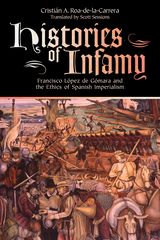
- Luis Fernando Restrepo, University of Arkansas
“In an eloquent and thorough exegesis, Roa-de-la-Carrera reveals how and why López de Gómara, having written the best of all possible books in exultation of Spanish imperialism, nevertheless failed to convince the readers of his time."
- Susan Schroeder, Tulane University
In Histories of Infamy, Cristián Roa-de-la-Carrera explores Francisco López de Gómara's (1511-ca.1559) attempt to ethically reconcile Spain's civilizing mission with the conquistadors' abuse and exploitation of Native peoples.
The most widely read account of the conquest in its time, Gómara's Historia general de las Indias y Conquista de México rationalized the conquistadors' crimes as unavoidable evils in the task of bringing "civilization" to the New World. Through an elaborate defense of Spanish imperialism, Gómara aimed to convince his readers of the merits of the conquest, regardless of the devastation it had wrought upon Spain's new subjects. Despite his efforts, Gómara's apologist text quickly fell into disrepute and became ammunition for Spain's critics. Evaluating the effectiveness of ideologies of colonization, Roa-de-la-Carrera's analysis will appeal to scholars in colonial studies and readers interested in the history of the Americas.
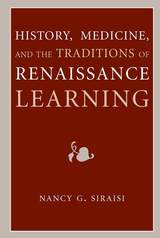
A major, path-breaking work, History, Medicine, and the Traditions of Renaissance Learning is Nancy G. Siraisi's examination into the intersections of medically trained authors and history in the period 1450 to 1650. Rather than studying medicine and history as separate disciplinary traditions, Siraisi calls attention to their mutual interaction in the rapidly changing world of Renaissance erudition. Far from their contributions being a mere footnote in the historical record, medical writers had extensive involvement in the reading, production, and shaping of historical knowledge during this important period. With remarkably detailed scholarship, Siraisi investigates doctors' efforts to explore the legacies handed down to them from ancient medical and anatomical writings and the difficult reconciliations this required between the authority of the ancient world and the discoveries of the modern. She also studies the ways in which sixteenth-century medical authors wrote history, both in their own medical texts and in more general historical works. In the course of her study, Siraisi finds that what allowed medical writers to become so fully engaged in the writing of history was their general humanistic background, their experience of history through the field of medicine's past, and the tools that the writing of history offered to the development of a rapidly evolving profession.
Nancy G. Siraisi is one of the preeminent scholars of medieval and Renaissance intellectual history, specializing in medicine and science. Now Distinguished Professor Emerita of History at Hunter College and the Graduate Center, City University of New York, and a 2008 winner of a John D. and Catherine T. MacArthur Foundation Fellowship, she has written numerous books, including Taddeo Alderotti and His Pupils (Princeton, 1981), which won the American Association for the History of Medicine William H. Welch Medal; Avicenna in Renaissance Italy (Princeton, 1987); The Clock and the Mirror (Princeton, 1997); and the widely used textbook Medieval and Early Renaissance Medicine (Chicago, 1990), which won the Watson Davis and Helen Miles Davis Prize from the History of Science Society. In 2003 Siraisi received the History of Science Society's George Sarton Medal, in 2004 she received the Paul Oskar Kristellar Award for Lifetime Achievement of the Renaissance Society of America, and in 2005 she was awarded the American Historical Association Award for Scholarly Distinction.
"A fascinating study of Renaissance physicians as avid readers and enthusiastic writers of all kinds of history: from case narratives and medical biographies to archaeological and environmental histories. In this wide-ranging book, Nancy Siraisi demonstrates the deep links between the medical and the humanistic disciplines in early modern Europe."
---Katharine Park, Zemurray Stone Radcliffe Professor of the History of Science, Harvard University
"This is a salient but little explored aspect of Renaissance humanism, and there is no doubt that Siraisi has succeeded in throwing light onto a vast subject. The scholarship is wide-ranging and profound, and breaks new ground. The choice of examples is fascinating, and it puts Renaissance documents into a new context. This is a major book, well written, richly learned and with further implications for more than students of medical history."
---Vivian Nutton, Professor, The Wellcome Trust Centre for the History of Medicine, University College London, and author of From Democedes to Harvey: Studies in the History of Medicine
"Siraisi shows the many-dimensioned overlaps and interactions between medicine and 'history' in the early modern period, marking a pioneering effort to survey a neglected discipline. Her book follows the changing usage of the classical term 'history' both as empiricism and as a kind of scholarship in the Renaissance before its more modern analytical and critical applications. It is a marvel of erudition in an area insufficiently studied."
---Donald R. Kelley, Emeritus James Westfall Thompson Professor of History, Rutgers University, New Brunswick, and Executive Editor of Journal of the History of Ideas

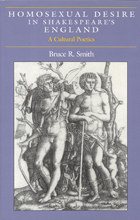
"The best single analysis of the homoerotic element in Renaissance English literature."—Keith Thomas, New York Review of Books
"Smith's lucid and subtle book offer[s] a poetics of homosexual desire. . . . Its scholarship, impressively broad and deftly deployed, aims to further a serious social purpose: the redemptive location of homosexual desire in history and the recuperation for our own time, through an understanding of its discursive embodiments, of that desire's changing imperatives and parameters."—Terence Hawkes, Times Literary Supplement
"The great strength of Bruce Smith's book is that it does not sidestep the complex challenge of engaging in the sexual politics of the present while attending to the resistant discourses and practices of Renaissance England. Homosexual Desire in Shakespeare's England demonstrates how a commitment to the present opens up our understanding of the past."—Peter Stallybrass, Shakespeare Quarterly
"A major contribution to the understanding of homosexuality in Renaissance England and by far the best and most comprehensive account yet offered of the homoeroticism that suffuses Renaissance literature."—Claude J. Summers, Journal of Homosexuality
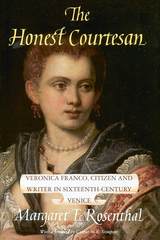
Margaret F. Rosenthal draws a compelling portrait of Veronica Franco in her cultural social, and economic world. Rosenthal reveals in Franco's writing a passionate support of defenseless women, strong convictions about inequality, and, in the eroticized language of her epistolary verses, the seductive political nature of all poetic contests. It is Veronica Franco's insight into the power conflicts between men and women—and her awareness of the threat she posed to her male contemporaries—that makes her literary works and her dealings with Venetian intellectuals so pertinent today.
Combining the resources of biography, history, literary theory, and cultural criticism, this sophisticated interdisciplinary work presents an eloquent and often moving account of one woman's life as an act of self-creation and as a complex response to social forces and cultural conditions.
"A book . . . pleasurably redolent of Venice in the 16th-century. Rosenthal gives a vivid sense of a world of salons and coteries, of intricate networks of family and patronage, and of literary exchanges both intellectual and erotic."—Helen Hackett, Times Higher Education Supplement
The Honest Courtesan is the basis for the film Dangerous Beauty (1998) directed by Marshall Herskovitz. (The film was re-titled The Honest Courtesan for release in the UK and Europe in 1999.)
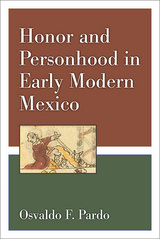
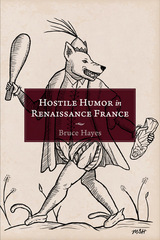
In sixteenth-century France, the level of jokes, irony, and ridicule found in pamphlets and plays became aggressively hostile. In Hostile Humor in Renaissance France, Bruce Hayes investigates this period leading up to the French Wars of Religion, when a deliberately harmful and destructive form of satire appeared.
This study examines both pamphlets and plays to show how this new form of humor emerged that attacked religious practices and people in ways that forever changed the nature of satire and religious debate in France. Hayes explores this phenomenon in the context of the Catholic and Protestant conflict to reveal new insights about the society that both exploited and vilified this kind of satire.
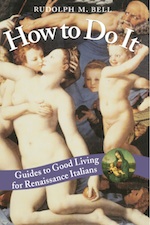
"Lively and curious reading, particularly in its cascade of anecdote, offered in a breezy, cozy, journalistic style." —Lauro Martines, Times Literary Supplement
"[Bell's] fascinating book is a window on a lost world far nearer to our own than we might imagine. . . . How pleasant to read his delightful, informative and often hilarious book." —Kate Saunders, The Independent
"An extraordinary work which blends the learned with the frankly bizarre." —The Economist
"Professor Bell has a sly sense of humor and an enviably strong stomach. . . . He wants to know how people actually behaved, not how the Church or philosophers or earnest humanists thought they should behave. I loved this book." —Christopher Stace, Daily Telegraph
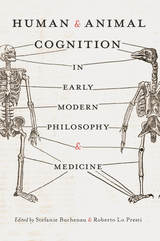
This edited volume focuses on medical and philosophical debates on human intelligence and animal perception in the early modern age, providing fresh insights into the influence of medical discourse on the rise of modern philosophical anthropology. Contributions from distinguished historians of philosophy and medicine focus on sixteenth-century zoological, psychological, and embryological discourses on man; the impact of mechanism and comparative anatomy on philosophical conceptions of body and soul; and the key status of sensibility in the medical and philosophical enlightenment.
READERS
Browse our collection.
PUBLISHERS
See BiblioVault's publisher services.
STUDENT SERVICES
Files for college accessibility offices.
UChicago Accessibility Resources
home | accessibility | search | about | contact us
BiblioVault ® 2001 - 2024
The University of Chicago Press









